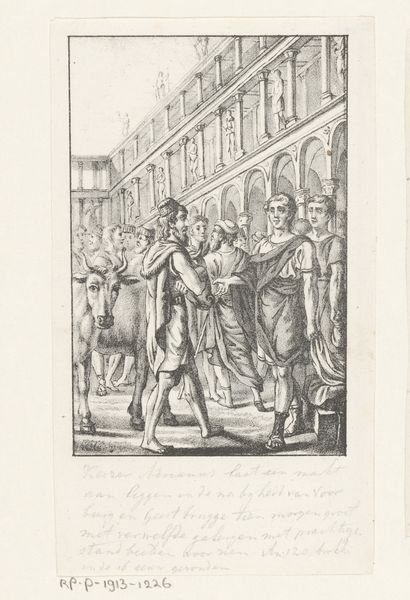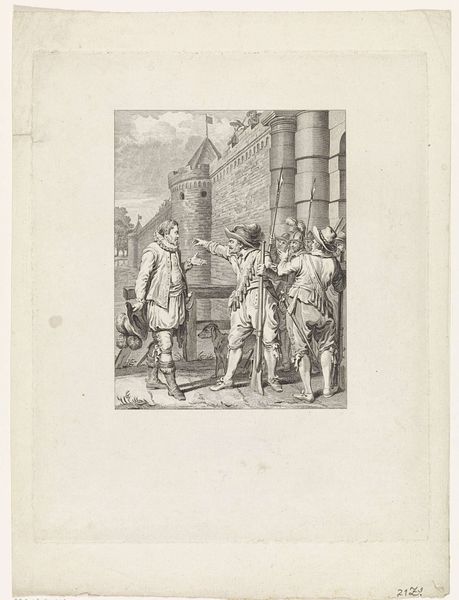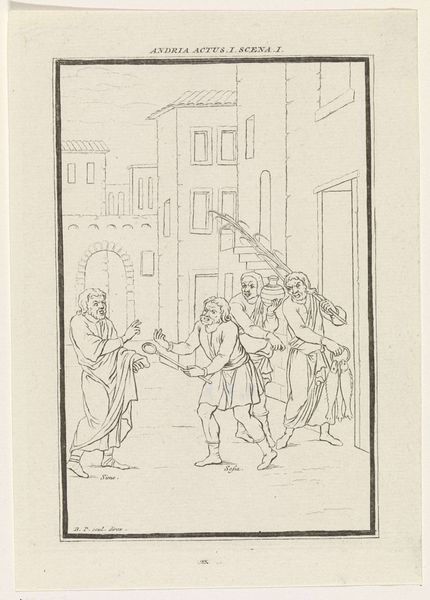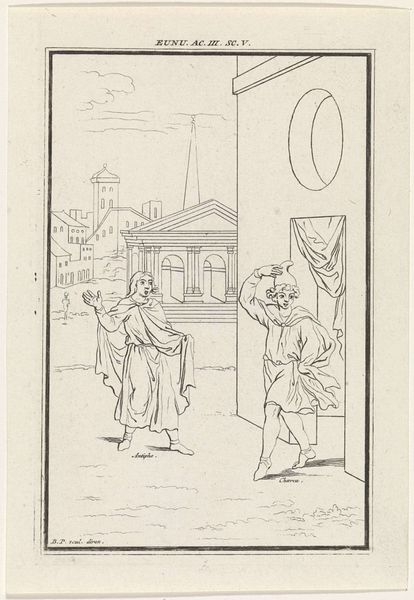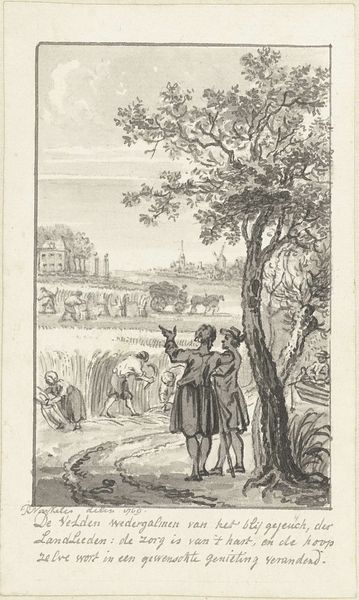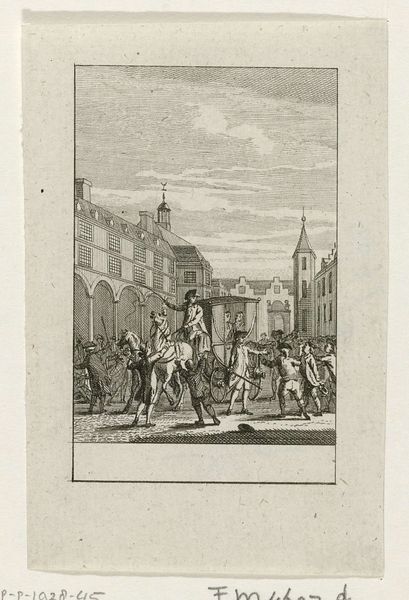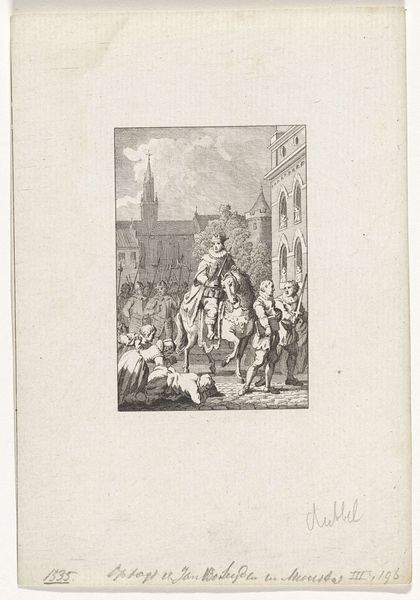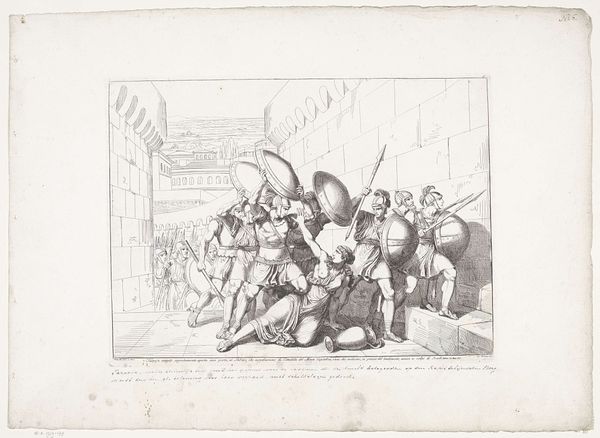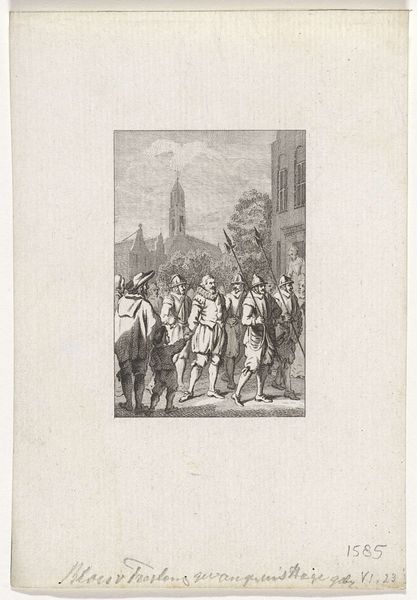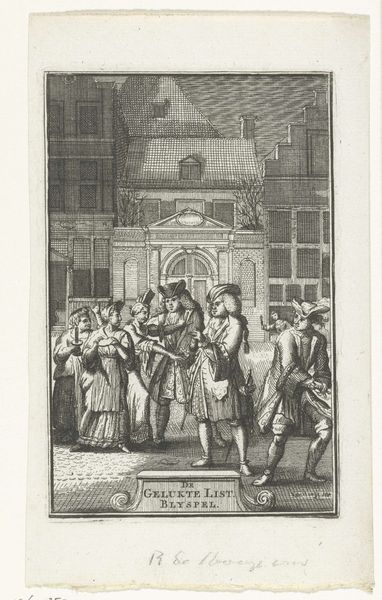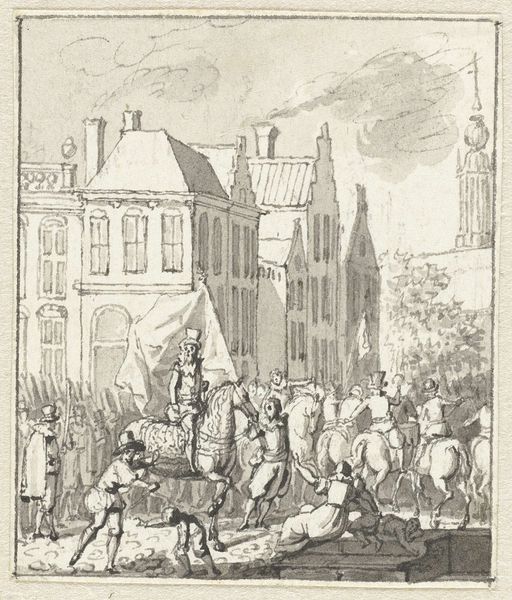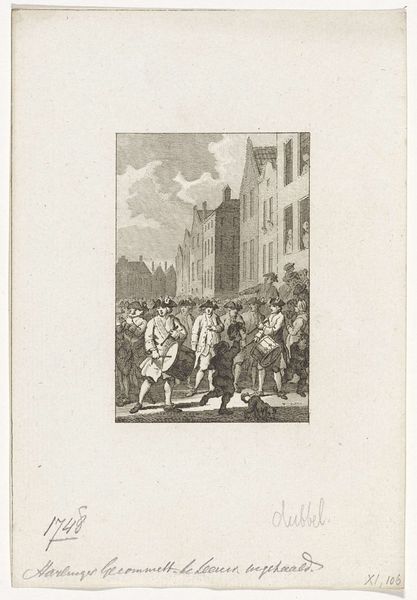
drawing, print, ink, engraving
#
drawing
#
baroque
# print
#
pen illustration
#
figuration
#
ink
#
history-painting
#
engraving
Dimensions: height 139 mm, width 96 mm
Copyright: Rijks Museum: Open Domain
Curator: This is an engraving by Bernard Picart, crafted between 1716 and 1718, titled "Scène uit de komedie Phormio van Terentius"—a scene from Terentius's comedy, Phormio. It's currently housed right here at the Rijksmuseum. The print illustrates a moment from the play. Editor: It's remarkable how the simple lines create such dramatic tension. The gestures of the figures, their flowing robes... I sense both urgency and perhaps, trickery. Curator: Absolutely. The artwork gives us insight into the theatrical world of the early 18th century and how classical plays were being re-imagined and disseminated. Consider the context: Picart was a prolific engraver, contributing significantly to illustrated books and thus shaping public understanding of literature. Editor: I'm interested in the dynamic between the figures. There is a figure being held back. I want to question the power structures inherent in these classical narratives, which have been historically dominated by male perspectives. Does this piece offer any subversive interpretations, or does it reinforce existing power dynamics? Curator: That's a crucial lens through which to examine it. While it directly illustrates the play, we can explore how Picart’s choices—composition, emphasis—might subvert or reinforce certain readings. He had to be careful about representing radical points of view. Publishers could dictate how narratives played out. Editor: Yes. The backdrop feels equally charged—a monumental cityscape implying the weighty structures behind human affairs. It also feels detached from the reality on stage. In our society, classical theatre is presented in exclusive environments, reinforcing disparities in education and access. Curator: The classical setting lends the work a sense of timelessness. But your point is well taken—how is the classical world being invoked here to comment on contemporary issues? Didactic art had a role in shaping social mores in 18th-century Europe. It reminds us that no image is politically neutral. Editor: Exactly! This artwork prompts essential questions about the politics of representation, class, and who has the privilege of interpreting history. What initially struck me as simple Baroque aesthetics is laden with meaning! Curator: A fresh perspective, indeed. Hopefully, we can all consider the narratives that persist through visual culture, while recognizing how we, the audience, have a say in reframing what we see.
Comments
No comments
Be the first to comment and join the conversation on the ultimate creative platform.
